Table of Contents |
The Physical Activity Guidelines for Americans provide the recommendation that resistance training exercises should be done 2 or more days a week for all major muscle groups. Therefore, it is helpful to further understand what the major muscle groups are, as well as some examples of exercises for each group. According to the Centers for Disease Control and Prevention, the major muscle groups of the body are the legs, hips, back, abdomen, chest, shoulders, and arms. The following table provides some example exercise movements for each major muscle group.
| Muscle Group | Example Exercise Movements |
|---|---|
| Legs | Any type of squat, lunge, or stepping movement |
| Hips | Any type of glute bridge, any type of lateral lower-body movement such as side-lying leg raises or seated abduction/adduction |
| Back |
Most types of pulling movements, such as any type of row, pulldown, or pull-up Back muscles are also involved when the spine extends, like the camel portion of a cat-camel, or as stabilizers for abdominal exercises, such as the bird-dog. |
| Abdomen |
Movements where the spine flexes, rotates, or laterally bends, as well as isometric movements like planks. The abdominal muscles are also more involved in movements requiring balance and stability, such as carrying a heavy load on one side or stepping with one leg. |
| Chest | Any type of pressing or pushing movement, such as a push-up or a chest press |
| Shoulders |
Overhead pushing movements, such as a shoulder press Shoulders are also involved in moving the arms away from the body, such as in a lateral raise. Depending on the movement, shoulders are also involved in other pushing and pulling movements. |
| Arms | Arm muscles can be further divided into biceps and triceps. Biceps are involved in any movement with elbow flexion, such as a bicep curl. Triceps are involved in any movement with elbow extension, such as a tricep extension. In addition, the biceps assist in pulling exercises, and the triceps assist in pushing exercises. |
Working all major muscle groups in your exercise routine is important for the sake of muscle balance, ensuring that the muscles surrounding each major joint in the body generate the appropriate amounts of opposing force (McCall, 2016). Your muscles work together in pairs called agonists and antagonists, where the agonist is the main muscle group doing the movement, and the antagonist moves in opposition to the agonist. Typically, as the agonist contracts, it shortens, and the antagonist lengthens.
EXAMPLE
Let’s say you are doing a bicep curl, like the illustration below demonstrates. As your elbow flexes to move the weight closer to you, the biceps contract and act as the agonist. The triceps act as the antagonist and lengthen in opposition to the biceps shortening. As you lower the weight and your elbow extends, these muscle groups exchange roles—the triceps contracts as the agonist for elbow extension, and the biceps lengths as the antagonist.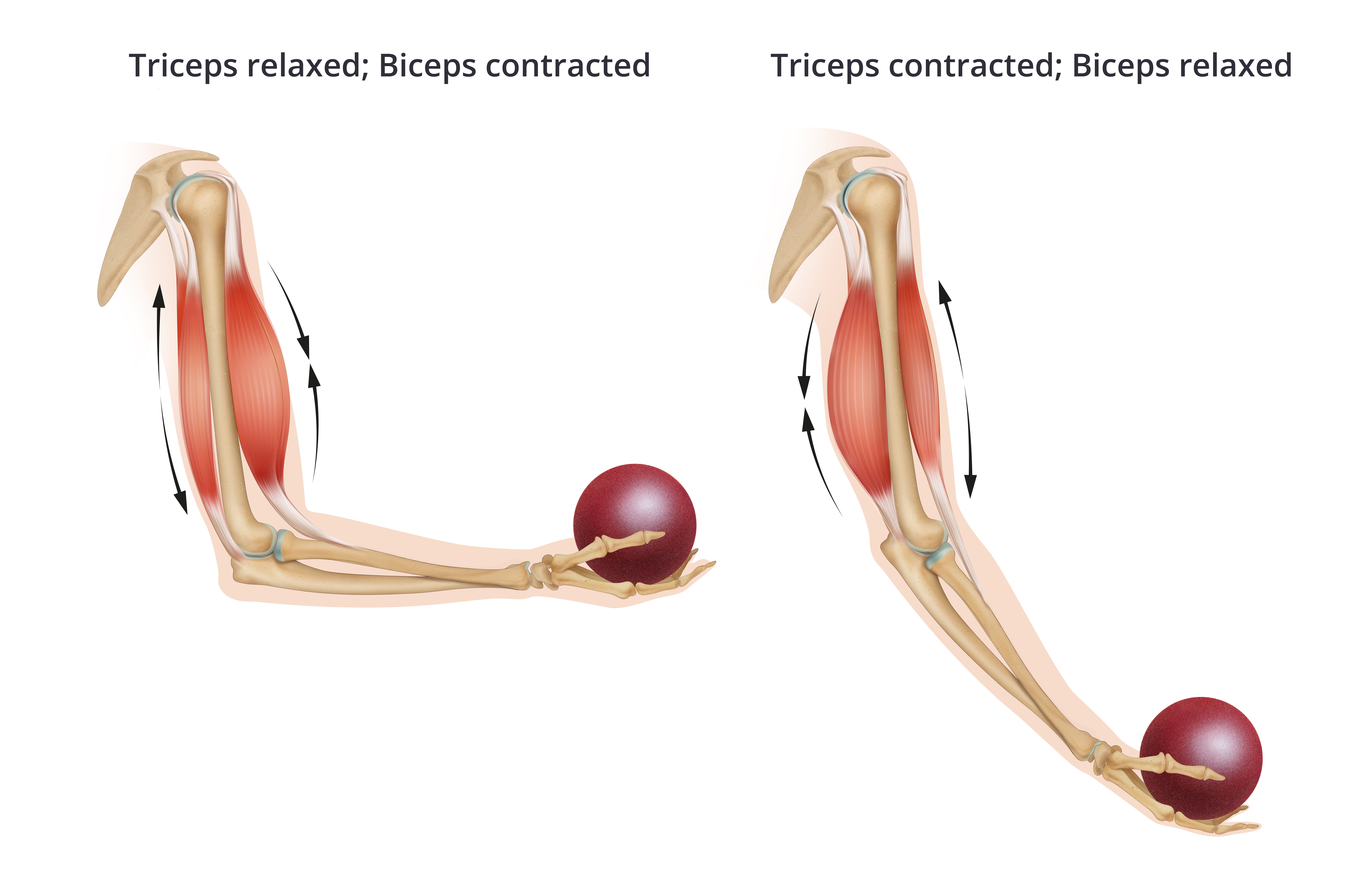
IN CONTEXT
The amount of opposing force is not necessarily equal between agonist and antagonist muscle groups. For example, a general premise is that the hamstring muscles should be about two third as strong as the quadriceps (Ruas et al., 2019). When the hamstring muscles are less than two third as strong as the quadriceps, the proper ratio for muscle balance is altered, and the risk of injuries increases, such as injuries to the ligaments of the knee (Rosene et al., 2001). This is because the hamstrings cannot stabilize the knee as well during movement.
An alternate way to consider resistance training exercises for a well-balanced fitness program is by movement type. Beyond agonists and antagonists, muscle groups have additional roles in working together for efficient movement. Synergists assist the agonist muscle in the movement. In the table above, you read that the biceps assist in pulling exercises, and the triceps assist in pushing exercises. In an exercise like a chest press, the chest muscles (pectorals) are the agonist, but the triceps also provide assistance even though they are not the main muscle group executing the movement. Stabilizers help to maintain alignment and proper movement as the agonists work. In the table above, you read that the abdominal muscles provide stability during movements on one side, like carrying a heavy load. In this action, stabilizers allow you to keep a relatively level upright posture despite only one side of your body bearing a load.
From all this information, it’s evident that muscles in the body don’t typically work in isolation but work together in groups. This is especially the case during any movement that is functional in mimicking activities of everyday life. When you bend down to pick up a heavy package that’s been delivered to your door, multiple muscle groups are at work in their various roles to help you move efficiently.

National organizations have some slight differences in how they describe movements by type. The National Strength and Conditioning Association (2015) describes the main movements as squat, hinge, lunge, push, horizontal pull, vertical pull, and press. The American Council on Exercise (2020) describes five primary movement patterns: bend-and-lift, single leg, push, pull, and rotation. Other organizations or fitness resources have variations on these movements, such as including general “core” movements, or having gait-related movements, like stepping and walking, in a separate category.
For our purposes in this part of the lesson, we’ll discuss movements in the categories of squatting/bending/hinging, single leg movements including walking or stepping, pushing movements, and pulling movements.
| Movement Type | Example Exercise Movements |
|---|---|
| Squatting, bending, or hinging |
Glute bridge or hip thrust Wall sit Any type of deadlift movement (such as using dumbbells or barbells) Any type of squat movement, from bodyweight to squats with load (such as using a hack squat or leg press machine or squatting with a barbell) |
| Single leg movements, including walking or stepping |
Any type of stepping up or down (including stepping or walking while carrying weight) Any type of lunge Any type of single-sided lower body movement, such as a side-lying leg raise |
| Pushing movements | Any type of movement where weight is pressed away from the body (such as a chest press or shoulder press) or where the body is pressed away from a surface, such as any type of push-up |
| Pulling movements | Any type of movement where weight is pulled toward the body (such as a lat pulldown or bent-over row), or where the body is pulled toward a surface, such as a pull-up |
In applying the FITT principle to exercise selection for resistance training, choosing a different exercise from a given movement category changes the Type. (In a basic sense, choosing a different exercise can also change the Intensity if it adds more load or is done at a higher speed). Changing up the type of exercise for a given movement type is important so that the body can keep progressing and so that muscles are worked at different angles and directions.
EXAMPLE
If a beginner to resistance training has been doing glute bridges with good form, they will likely benefit from moving on to a squat to further challenge their body’s stability and mobility. Eventually, they may move on to squatting with some type of load (such as holding a medicine ball or dumbbell) to continue gradually overloading the muscles.Movements that involve multiple joints and muscle groups are called compound movements. This is in comparison to movements that involve a single joint, which are termed isolation movements. A leg extension on a machine only works the muscles that extend the knee, making it an isolation movement. However, a squat involves flexion and extension at the hip and the knee, making it a compound movement.
Your core muscles are not just the muscles of the abdominals, or the “six-pack” muscles that come to mind when we think about a very athletic physique. Your core includes many deep muscles and surface muscles that contribute to breathing, posture, and stable movements. In addition to the superficial six-pack muscles, which are called the rectus abdominus, you have two pairs of oblique muscles and the deepest sheath of core muscle, called the transverse abdominis. Together with other muscles of your core, like the ones that support your spine, these muscles work together to help maintain the body’s stability and transmit force. In fact, this group of muscles functions as the body’s natural weight belt. When your transverse abdominis contracts, it increases stability of the lumbar spine, along with the coordination of other core muscles (Willardson, 2008).
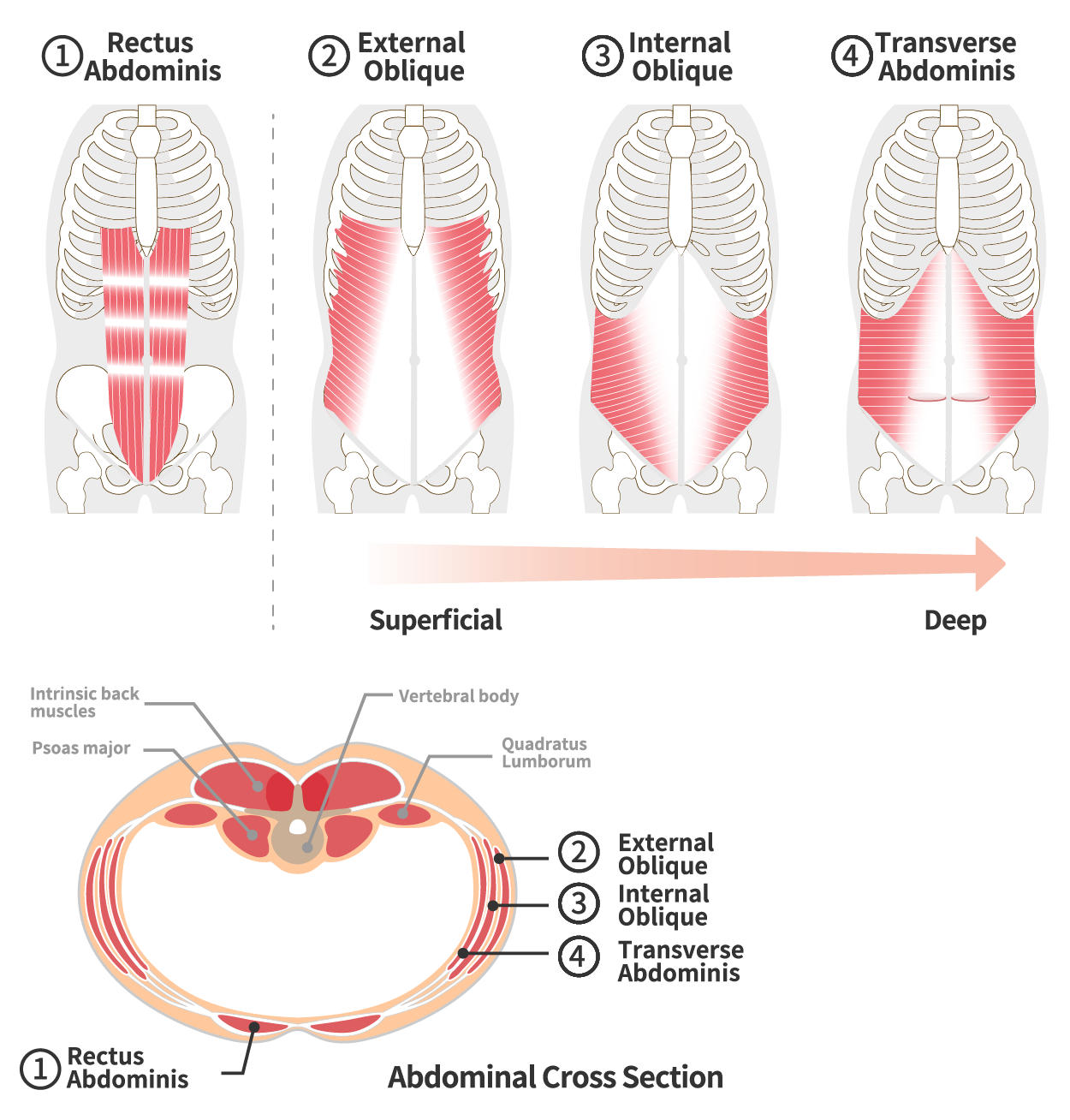
Considering what movements to select for core exercises can start with considering the movements at the spine, since the core musculature supports the spine. In general, our spine can extend, flex, bend laterally (termed lateral flexion), and rotate. However, it can be common for spinal flexion exercises to get priority, such as sit-ups or crunches. Using a variety of movements and directions will help contribute to muscle balance and help movements transfer better into everyday activities or sports.
People who are just starting off with resistance training typically benefit from focusing first on bodyweight movements, or movements with light resistance, such as using resistance bands. This allows the body to adapt and learn the correct form before adding more resistance (such as through machines, dumbbells, or barbells). However, a disadvantage of using primarily bodyweight movements is that the resistance is limited to whatever an individual weighs, so someone with a goal to build strength may eventually reach a plateau (Haff & Triplett, 2016).
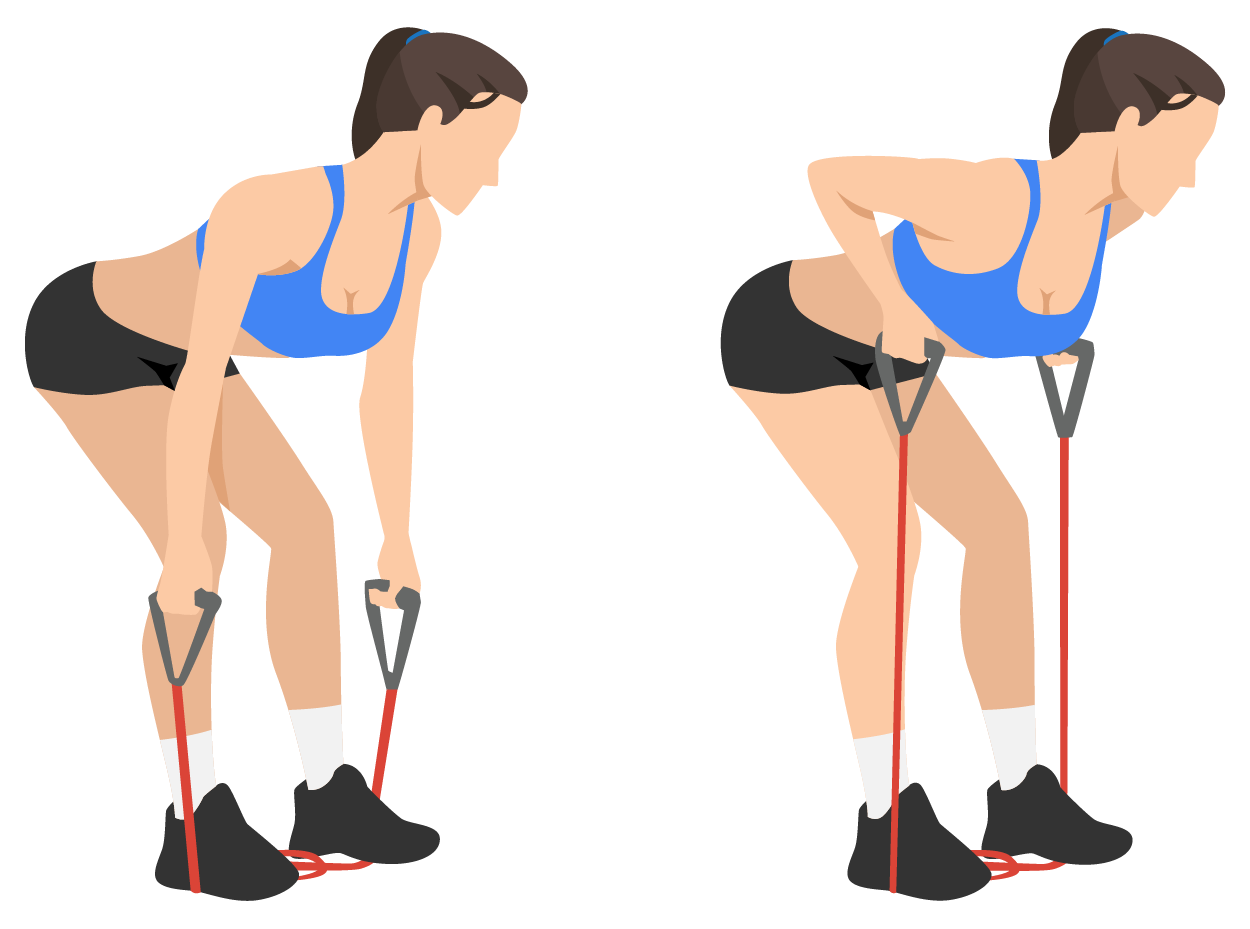
Weight machines are a common choice for adding load to resistance training exercises but have both advantages and disadvantages. One advantage is that weight machines tend to be safer than using free weights, such as dumbbells or barbells. Weight machines have selector pins and safety mechanisms that prevent the weight from being dropped. In addition, most weight machines only allow movement in a straight line, so the range of movement is controlled. Because of this, weight machines can also be useful for someone with joint conditions or past injuries. Weight machines can also be an advantage for someone who wants to isolate specific muscle groups. If someone is trying to improve their hamstring strength relative to their quadriceps strength, they can isolate the hamstrings on a machine. Someone who wants to build hypertrophy may also use machines to ensure they are isolating all major muscle groups.
However, weight machines are typically less relevant to functional movements of everyday life, or sports. Many weight machines have the person in a seated position, and the controlled movement in one straight line means that the body has far less opportunity for core stability.
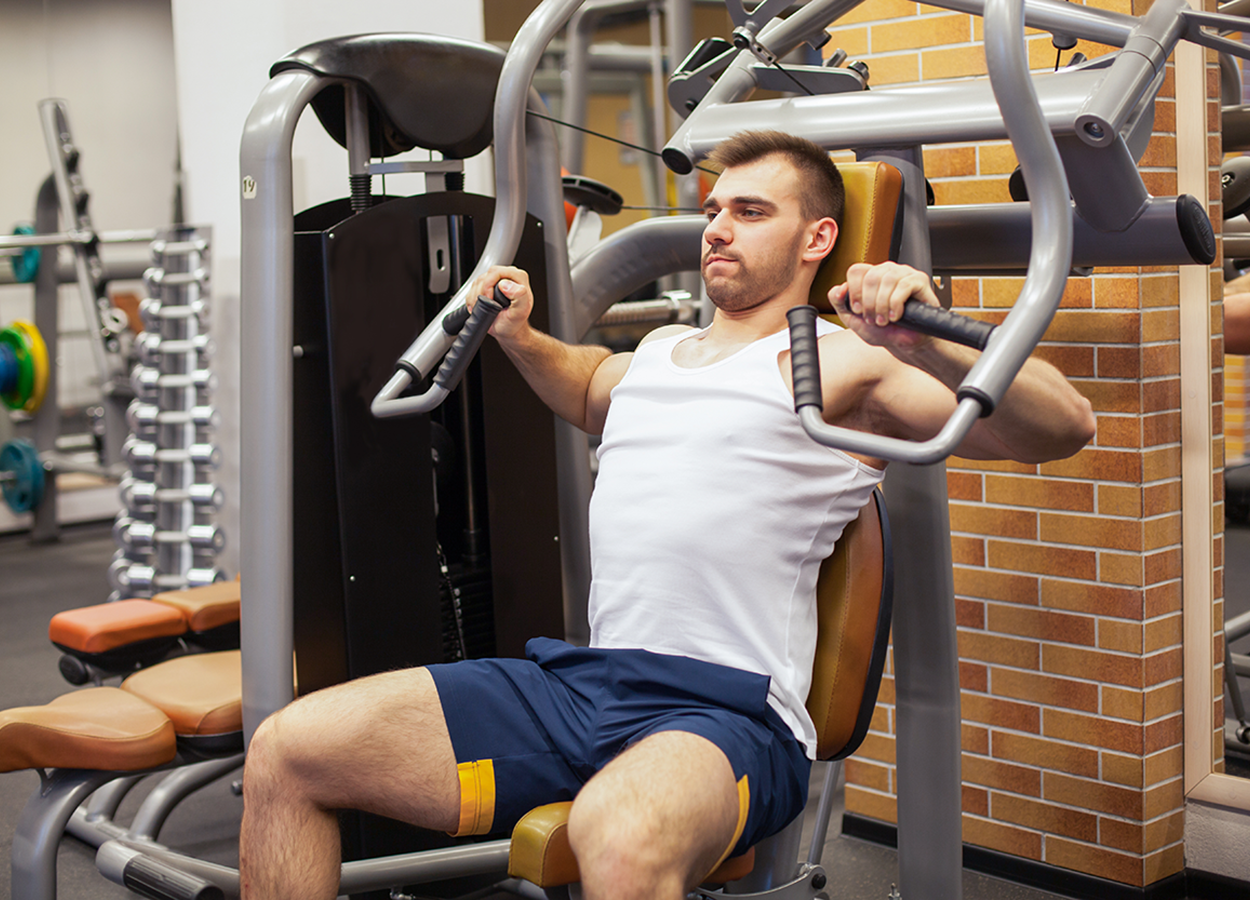
Free weights, such as dumbbells, barbells, and kettlebells tend to be the most relevant choice for transferring into actual movements. This is because they require multiple groups of muscles to work together for stability and coordination (McCall, 2014). In the image below, the individual is not only using her leg muscles for squatting, but the muscles of her core to maintain good posture and body alignment. Free weights also offer more variety in changing up the exercise type to keep progressing per the FITT principle. In the image below, the individual could use the barbell for other movement variations involving squatting, bending or hinging, such as holding the barbell overhead to squat, or performing a deadlift with the barbell.
A disadvantage of free weights is that these movements can be complex and require extra attention to safety. Some free-weight movements require either a spotter or enough space to drop the weight when the person cannot complete the movement. A person also needs to be well-versed in the proper form and technique for free-weight movements. Otherwise, they are at risk of moving without control and coordination, increasing the risk of injury.
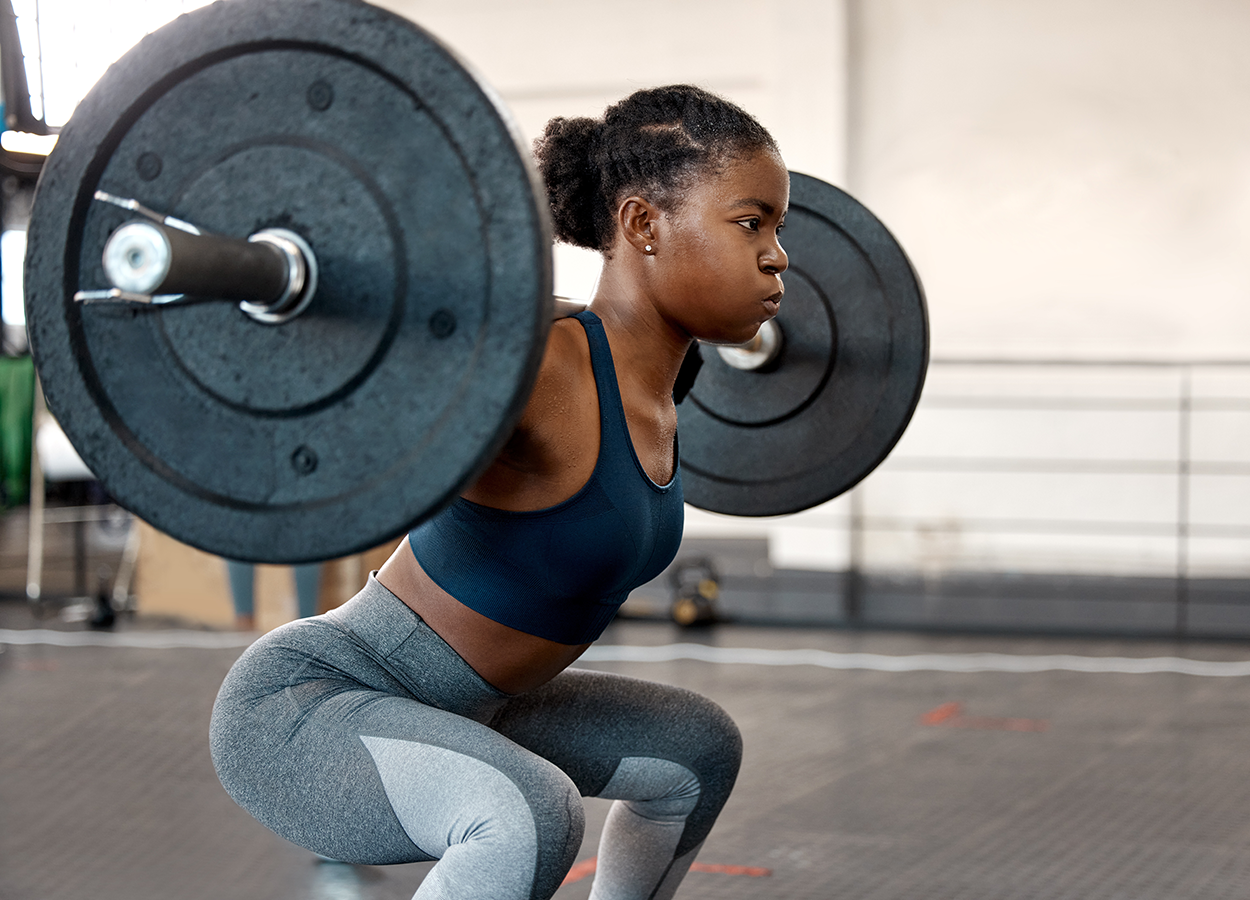
Source: THIS TUTORIAL WAS AUTHORED BY Anna Caggiano FOR SOPHIA LEARNING. PLEASE SEE OUR TERMS OF USE. Markup: THIS TUTORIAL WAS AUTHORED BY Anna Caggiano FOR SOPHIA LEARNING. PLEASE SEE OUR TERMS OF USE.
REFERENCES
American Council on Exercise (2020). The exercise professional’s guide to personal training: A client-centered approach to inspire active lifestyles. Jo, S., Bryant, C.X., Dalleck, L.C., Gagliardi, C.S., and Green, D.J. (eds). ISBN: 9781890720766
Centers for Disease Control and Prevention (2009). Fact sheet for health professionals on physical activity guidelines for older adults. U.S. Department of Health and Human Services. www.cdc.gov/physicalactivity/downloads/pa_fact_sheet_olderadults.pdf
Haff, G., & Triplett, N. T. (2016). Essentials of strength training and conditioning (4th ed). National Strength and Conditioning Association. Champaign, IL, Human Kinetics.
McCall, P. (2014). How to select the right exercises for your clients. American Council on Exercise. www.acefitness.org/resources/pros/expert-articles/4921/how-to-select-the-right-exercises-for-your-clients/
McCall, P. (2016). Muscle imbalance: 6 things to know about muscle imbalances. American Council on Exercise. www.acefitness.org/resources/everyone/blog/5930/muscle-imbalance-6-things-to-know-about-muscle-imbalances/
National Strength and Conditioning Association (2015). Foundations of fitness programming. National Strength and Conditioning Association. www.nsca.com/contentassets/8323553f698a466a98220b21d9eb9a65/foundationsoffitnessprogramming_201508.pdf
Rosene, J. M., Fogarty, T. D., & Mahaffey, B. L. (2001). Isokinetic hamstrings: quadriceps ratios in intercollegiate athletes. Journal of Athletic Training, 36(4), 378. www.ncbi.nlm.nih.gov/pmc/articles/PMC155432/
Ruas, C. V., Pinto, R. S., Haff, G. G., Lima, C. D., Pinto, M. D., & Brown, L. E. (2019). Alternative methods of determining hamstrings-to-quadriceps ratios: a comprehensive review. Sports Medicine-Open, 5, 1-14. doi.org/10.1186/s40798-019-0185-0
Willardson, J. M. (2008). A periodized approach for core training. ACSM's Health & Fitness Journal, 12(1), 7-13. doi.org/10.1249/01.fit.0000298458.22383.bd